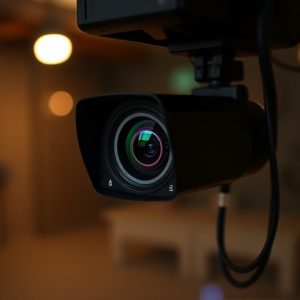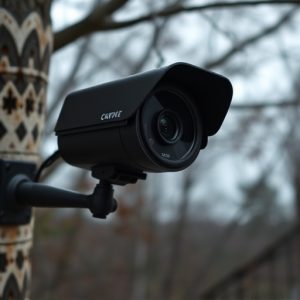Unveiling Nanny Cameras: Light Testing for Hidden Identities
Nanny cameras with sound recording capabilities offer remote surveillance in private settings, captu…….
Nanny cameras with sound recording capabilities offer remote surveillance in private settings, capturing video and audio for monitoring purposes. These hidden devices utilize advanced lighting techniques and sensors to remain concealed but can be detected using thermal imaging and UV lights. The legal and ethical implications of such cameras are complex, balancing security needs against privacy rights, with many jurisdictions regulating their use and installation. Clear signaling and consent are essential to foster transparency and mitigate potential harm caused by unexpected surveillance.
Uncover the hidden eyes: Exploring disguised camera identification through a lights test. In today’s digital age, privacy concerns have led to a surge in nanny cam usage. However, these surveillance devices often employ sophisticated disguises, making their detection tricky. This article delves into the science behind identifying hidden cameras, focusing on the role of light and various testing methods. We also examine legal boundaries and ethical dilemmas surrounding this technology, including the controversial issue of Nanny Cam With Sound Recording.
- Understanding Nanny Cameras and Their Disguises
- The Role of Light in Camera Detection
- Testing Methods for Identifying Hidden Cameras
- Legal Implications and Ethical Considerations
Understanding Nanny Cameras and Their Disguises
Nanny cameras, also known as hidden cameras, are devices designed to capture video and audio surreptitiously, often used for surveillance purposes in homes or other private settings. These cameras can take many forms, from seemingly innocuous household objects like smoke detectors, power outlets, or even artificial plants, to more overt disguises such as fake doorknobs or clock radios. The primary goal of these hidden cameras is to provide remote monitoring capabilities, allowing users to observe activities within a space without the knowledge of those being recorded.
A notable feature of many nanny cameras is their ability to record sound, enabling audio surveillance alongside video. This additional dimension enhances the utility of the device for monitoring purposes, as it captures not just visual but also auditory cues, potentially revealing intimate conversations or unusual noises that might be missed otherwise. The integration of sound recording in nanny cameras underscores the evolving sophistication of surveillance technology and its increasing role in modern life.
The Role of Light in Camera Detection
In the realm of hidden surveillance, light plays a subtle yet significant role in camera identification. Disguised cameras, often referred to as nanny cams with sound recording, rely on strategic lighting to remain undetected while capturing footage. By mimicking ambient light or using specific wavelengths not easily visible to the human eye, these cameras blend into their surroundings, making them nearly invisible to the naked eye.
The subtle glow of LED lights or the reflection of nearby lighting sources can be crucial indicators for detecting these hidden devices. Advanced camera systems now employ infrared or UV sensors that can pick up on unusual light patterns or spectral signatures, alerting users to potential nanny cams. This innovative use of light as a tool in surveillance technology underscores the constant evolution of privacy protection and security measures in today’s digital era.
Testing Methods for Identifying Hidden Cameras
Identifying hidden cameras, especially those like nanny cams with sound recording capabilities, requires sophisticated methods to ensure their detection. One common approach is visual inspection using specialized equipment, such as thermal imaging cameras and UV lights. Thermal imaging detects heat signatures, which can highlight unusual patterns indicative of camera lenses or circuits. Similarly, UV light reveals fluorescent markings that may be present on camera components not visible under normal lighting.
These testing methods are crucial for professionals in fields like security, forensic science, and law enforcement who need to uncover clandestine surveillance devices. Combining multiple techniques increases the chances of successful identification, as different cameras may exhibit varying characteristics under each test. For instance, a nanny cam with sound recording might show up as a heat source or have specific UV markings depending on its composition and age.
Legal Implications and Ethical Considerations
The use of disguised cameras, particularly those with sound recording capabilities like nanny cams, raises significant legal and ethical concerns. While hidden surveillance can provide valuable evidence in certain situations, it also infringes on privacy rights. Many jurisdictions have strict regulations regarding the placement and use of such devices to protect individuals from unlawful intrusion into their personal spaces, including homes and workplaces. Unauthorized installation of these cameras, especially without consent, is often considered a criminal offense.
Ethically, the debate centers around balancing security needs with the right to privacy. Capturing images and audio without knowledge can lead to a loss of trust and potential harm if mishandled. It’s crucial for users to understand the legal boundaries and ensure they obtain consent when necessary. Moreover, transparency in using these devices is key; clear indication that surveillance is occurring prevents unease and distrust among those being watched.
Disguised camera identification using light patterns offers a promising method to combat the prevalence of nanny cameras with sound recording. By employing advanced testing techniques, we can ensure that privacy is protected and ethical boundaries are respected in today’s digital era. Further research and legal frameworks need to evolve to keep pace with technology, enabling us to navigate this complex landscape while maintaining trust and security.


